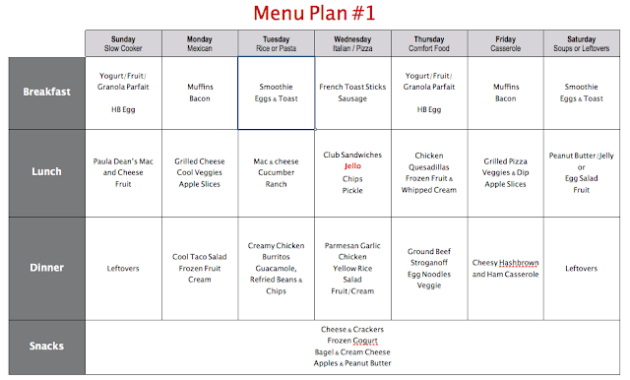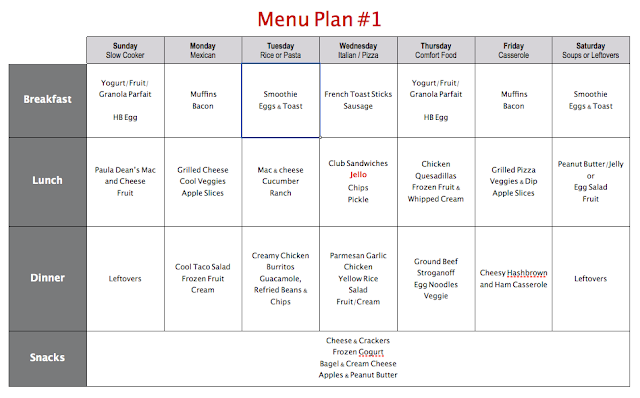
How to Create a Diabetes Meal Rotation System: A Practical Guide
Managing diabetes effectively requires a multifaceted approach. Diet plays a crucial role. A well-structured meal plan can significantly impact blood sugar control. A diabetes meal rotation system offers a flexible and sustainable way to achieve this. This guide provides a comprehensive overview of creating and implementing such a system. It aims to empower individuals with diabetes to take control of their health. It will provide the tools to build a balanced and enjoyable eating plan.
The principles behind a successful diabetes meal rotation system are straightforward. It involves planning meals in advance. It also involves varying food choices to ensure nutritional diversity. It prevents dietary monotony. This approach helps manage blood sugar levels. It also promotes overall well-being. It is a practical strategy for long-term diabetes management. This article will explore each step in detail.
Understanding the Benefits of a Meal Rotation System
Adopting a diabetes meal rotation system offers several advantages over a static meal plan. First and foremost, it combats dietary fatigue. Eating the same meals repeatedly can become tedious. This can lead to poor adherence to the diet. A rotation system introduces variety. It keeps mealtimes interesting. This is a crucial factor in long-term success. It also helps prevent burnout.
Secondly, a rotation system promotes nutritional balance. By regularly changing food choices, individuals consume a wider range of nutrients. This includes vitamins, minerals, and antioxidants. These are essential for overall health. They also support diabetes management. Different foods offer different nutritional profiles. Rotation ensures that the body receives a diverse array of beneficial compounds.
Thirdly, a flexible system adapts to changing needs. Life is unpredictable. A rotation system can accommodate social events. It also accommodates travel plans. It allows for adjustments based on blood sugar readings. It makes it easier to maintain a healthy eating pattern. It does not require strict adherence to a rigid schedule. This flexibility reduces stress. It also makes it easier to stay on track.
Planning Your Meal Rotation System: The Foundation
The foundation of a diabetes meal rotation system lies in careful planning. Before implementing any changes, consult with a healthcare professional. This includes a doctor or a registered dietitian. They can provide personalized advice. They can also tailor the plan to individual needs and health conditions. This is important to ensure safety and effectiveness.
Step One: Assessing Your Current Eating Habits. Begin by evaluating your current eating patterns. Keep a food diary for a week. Record everything you eat and drink. Note the portion sizes and the time of day. Track your blood sugar levels before and after meals. This will provide valuable insights into how different foods affect your body. It will also identify areas for improvement.
Step Two: Setting Realistic Goals. Define your goals for the meal rotation system. Are you aiming to lower your A1C? Do you want to improve your blood sugar control? Are you trying to lose weight? Setting specific, measurable, achievable, relevant, and time-bound (SMART) goals will help you stay motivated. It will also allow you to track your progress effectively.
Step Three: Creating a Master List of Foods. Compile a list of foods that you enjoy. Ensure these foods are suitable for diabetes management. Focus on whole, unprocessed foods. Include lean proteins, non-starchy vegetables, and whole grains. Include healthy fats. This should be your primary focus. Consider any food allergies or intolerances. Include these in your list. Also, make sure to consider any dietary restrictions.
Building Your Meal Rotation: Practical Strategies
Once you have a solid foundation, it is time to build your diabetes meal rotation system. This involves creating a structure that fits your lifestyle. Consider your preferences. Take into account your schedule. And also, consider your cooking skills. The goal is to make it sustainable and enjoyable.
Week-Long Rotation Cycles. A popular approach is to create a week-long meal rotation cycle. Plan different meals for each day of the week. Ensure each day includes a variety of food groups. Include breakfasts, lunches, dinners, and snacks. This provides structure. It also allows for flexibility. You can repeat the cycle weekly. You can also adjust meals based on your blood sugar readings.
Meal Swapping. Within your rotation, incorporate meal swapping. This allows you to substitute similar meals. For example, you can swap chicken for fish in a dinner recipe. This keeps things fresh. It also makes it easier to manage ingredients. It minimizes food waste.
Portion Control. Portion control is crucial for diabetes management. Use measuring cups and spoons. Use a food scale. This will ensure accurate portion sizes. This is especially important for carbohydrate-containing foods. Carbohydrates have a significant impact on blood sugar levels. Pay attention to the nutritional information on food labels. Be mindful of serving sizes.
Recipe Resources. Utilize recipe resources. There are numerous websites and cookbooks dedicated to diabetes-friendly recipes. These resources can provide inspiration. They can also provide guidance on meal preparation. Look for recipes that are low in carbohydrates. Ensure they are high in fiber. They also need to be rich in nutrients. This can help you create delicious and healthy meals.
Incorporating Variety and Avoiding Monotony
Maintaining interest in your diabetes meal rotation system is vital. The key is to incorporate variety. This prevents monotony. It makes the eating plan more enjoyable. This enhances long-term adherence. You must embrace creativity.
Exploring Different Cuisines. Experiment with different cuisines. Explore the flavors and ingredients from around the world. Try Mediterranean, Asian, or Latin American cuisines. These cuisines often feature healthy ingredients. They also offer a wide range of flavors. This keeps your taste buds engaged. It keeps your meals interesting.
Seasonal Produce. Embrace seasonal produce. Fruits and vegetables are at their peak during certain times of the year. They are often more affordable. They are also more flavorful. Incorporate seasonal items into your meals. This will add variety and freshness.
Theme Nights. Consider incorporating theme nights into your meal plan. These can be fun. They can also be a great way to introduce new foods. Examples include taco night, stir-fry night, or pizza night. Modify recipes to make them diabetes-friendly. Use whole-wheat tortillas. Use lean protein sources. Load up on non-starchy vegetables.
Snack Variety. Do not neglect snacks. Plan a variety of healthy snacks to keep you satisfied between meals. Include options like nuts, seeds, fruits, and vegetables. Choose snacks that provide a good balance of protein, fiber, and healthy fats. These will help stabilize blood sugar levels. They will also prevent overeating at mealtimes.
Monitoring and Adjusting Your System
Creating a diabetes meal rotation system is not a one-time event. It is an ongoing process. Regular monitoring and adjustments are necessary. This ensures that the system remains effective and sustainable. You must track your progress.
Regular Blood Sugar Monitoring. Monitor your blood sugar levels regularly. This will help you understand how different meals affect your body. Keep a log of your blood sugar readings. Record the time of day. Note the food you ate. Record the portion sizes. This will help you identify any patterns. It will also identify any foods that might be causing spikes or dips in your blood sugar.
Tracking Your Progress. Track your progress towards your goals. This includes monitoring your blood sugar levels. It also includes tracking your weight. Record your energy levels. Note any other relevant health indicators. This helps you to see if your meal rotation system is working. It also helps you to make necessary adjustments.
Making Adjustments. Be prepared to make adjustments to your meal rotation system. If your blood sugar levels are consistently high, you may need to adjust your carbohydrate intake. If you are not losing weight, you may need to reduce your portion sizes. Make changes gradually. This will help you see how they affect your body. Consult with your healthcare team for guidance.
Seeking Support. Do not hesitate to seek support. Join a diabetes support group. Talk to a registered dietitian. Consult with your doctor. These resources can provide valuable advice and encouragement. This helps you stay motivated. It helps you stay on track.
Sample Meal Rotation Plan
Here is a sample meal rotation plan. Remember to adjust this plan to your individual needs and preferences. This is just a starting point. Consult with your healthcare team before implementing any new meal plan.
Week 1
- Monday: Breakfast: Oatmeal with berries and nuts. Lunch: Salad with grilled chicken. Dinner: Baked salmon with roasted vegetables.
- Tuesday: Breakfast: Greek yogurt with fruit. Lunch: Leftover salmon and vegetables. Dinner: Chicken stir-fry with brown rice.
- Wednesday: Breakfast: Whole-wheat toast with avocado and eggs. Lunch: Turkey and vegetable wrap. Dinner: Lentil soup with a side salad.
- Thursday: Breakfast: Smoothie with protein powder and spinach. Lunch: Tuna salad on whole-wheat bread. Dinner: Chicken and vegetable skewers with quinoa.
- Friday: Breakfast: Scrambled eggs with vegetables. Lunch: Leftover chicken and quinoa. Dinner: Pizza on whole-wheat crust with vegetables.
- Saturday: Breakfast: Pancakes made with whole-wheat flour and berries. Lunch: Salad with chickpeas and grilled tofu. Dinner: Grilled steak with sweet potatoes.
- Sunday: Breakfast: Omelet with vegetables. Lunch: Leftover steak and sweet potatoes. Dinner: Chicken and vegetable curry with brown rice.
Week 2
- Monday: Breakfast: Whole-wheat toast with peanut butter and banana. Lunch: Salad with hard-boiled eggs. Dinner: Baked cod with green beans and brown rice.
- Tuesday: Breakfast: Cottage cheese with fruit. Lunch: Leftover cod and vegetables. Dinner: Chicken tacos with whole-wheat tortillas.
- Wednesday: Breakfast: Whole-grain cereal with milk and fruit. Lunch: Chicken salad sandwich on whole-wheat bread. Dinner: Vegetarian chili.
- Thursday: Breakfast: Smoothie with protein powder and spinach. Lunch: Leftover chili. Dinner: Turkey meatballs with zucchini noodles.
- Friday: Breakfast: Scrambled eggs with vegetables. Lunch: Salad with chickpeas and grilled tofu. Dinner: Pizza on whole-wheat crust with vegetables.
- Saturday: Breakfast: Pancakes made with whole-wheat flour and berries. Lunch: Leftover turkey meatballs with zucchini noodles. Dinner: Grilled chicken with asparagus.
- Sunday: Breakfast: Omelet with vegetables. Lunch: Salad with grilled chicken. Dinner: Baked salmon with roasted vegetables.
Conclusion: Embracing a Sustainable Approach
Creating a diabetes meal rotation system is a proactive step towards managing diabetes. It promotes variety, nutritional balance, and flexibility. It empowers individuals to make informed food choices. It ultimately improves their overall health. It is essential to consult with healthcare professionals. They can help you create a personalized plan. This plan will meet your specific needs. Also, remember to monitor your progress. Make adjustments as needed. Embrace a sustainable approach. This will help you achieve long-term success. You can live a healthier and more fulfilling life.
By implementing the strategies outlined in this guide, you can transform your approach to diabetes management. You can make it a more enjoyable and manageable experience. This is not just about following a diet. It is about cultivating a healthy relationship with food. It is also about prioritizing your well-being. Take control of your health. Start building your diabetes meal rotation system today. [See also: Diabetes-Friendly Snack Ideas] [See also: Tips for Dining Out with Diabetes] [See also: Understanding Carbohydrate Counting for Diabetes]

